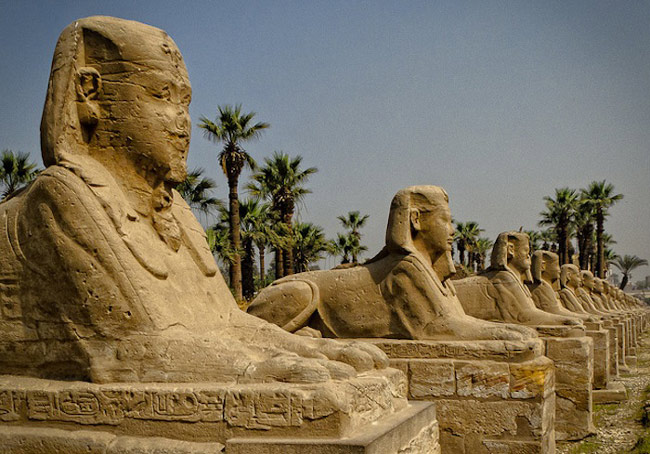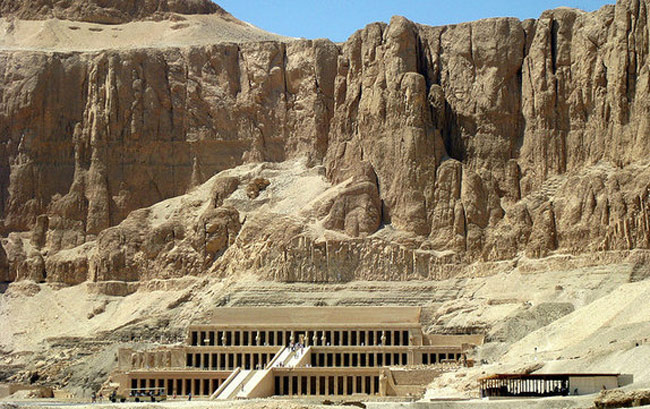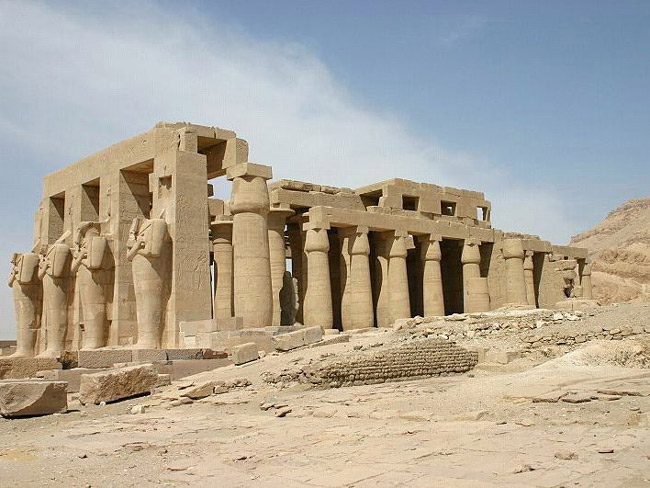Ancient city of Thebes and its archaeological sites - Egypt
The Unesco Scientific, Educational and Cultural Organization has recognized - The City of Thebes and its archaeological sites are the World Cultural Heritage in 1979.
Ancient city of Thebes and its archaeological relics - World cultural heritage in Egypt
Thebes is one of the most important cities of ancient Egypt, which lies on the banks of the Nil River 800 kilometers south of the Mediterranean. This city is famous as the cultural, administrative and political center of ancient Egypt. Today Thebes has become an archaeological center with famous monuments such as the Valley of Kings; Kamak Temple; Luxor Temple . and the tomb of Pharaohs .

According to the historical documents, the empire of the Egyptian Empire (2730-2300 BC), the city has not played a significant role. Until Metouhotep unified Egypt, Thebes became the leading political and religious center in Egypt under the era of XI. Also during this time, the large temples and tombs of Paraong were built.

The AI Karnak area, which is a large village of ancient Egypt, is located on the banks of the Nile, which occupies a very large area of many buildings, castles, statues and temples. Particularly, temples in this area have a large scale and area which has created a separate area, from North to South there is Montu temple; Amon temple area and Mout temple area. These temples are connected by the Sphinx corridor, which leads to the Louxor temple. Amon main temple consists of a number of architectures built in many different periods. Original architecture from the 12th dynasty (kings from 2000 to 1792 BC). The show pants and relics largely date from the Pharaon dynasty from the sixteenth century to the 13th century BC. In the embrace of Amon Temple, in the north are large temples in the south, a very beautiful temple in Khonsou era and Ramses Third. Overall the relics in Karnak are currently threatened by the rising water level of the Nil, resulting from the construction of many dams on the Nile.



Some of the remaining architectures are now in the ancient city of Thebes, Egypt.From the size of the structure to the carved stone pillars, walls and how to create these architectural works of ancient Egypt, the whole world must admire
Louxor is also known as Karnak Temple - this is the largest architectural temple complex in Egypt with many stone pillars, stone and pinnacle statues . The temple was built to worship Amon god, wind god and god. air with Mut goddess (wife of Amon god) and son of the Moon god. Two Memnon statues were found during a temple excavation, but only half of the remains were enough to show the world the ability to carve stones, the statues of the ancient Egyptians reached the ultimate level. The construction of Karnak Temple began with the life of Pharaon Amenophis Tertiary (1408 - 1372 BC) where there was a field of pillars, pillars, halls with standing rows and columns. By the time Ramses II (1301-1235 BC), again created a courtyard with a porch, in the foreground there was a pillar, six large statues and two original stone pillars. In 1831, one of these two pillars was brought to France and now erected in Place de la Concorde Square, Paris.

The two famous giant statues at Thebes still contain many unsolved secrets

Along with Cairo, Thebes is the most visited city in Egypt
Deirel Bahari is the archaeological site of Egypt in the left bank of the Nile, facing Karnak, in a wide valley. Queen Hatshepsout was the initiator of Deirel Bahari's construction (around 1500 BC). This is a narrow valley that still has many ruins of buildings from thousands of years ago.

The Medinet Habou area is the southern part of the ancient city of Thebes. The most significant architecture is Pamsès III temple (1198 - 1166 BC). The site of this temple is near the temple of Ramses II. The temple is decorated with many embossed monumental images depicting the King's battles with Liby and the coastal tribes. To the south of the temple is a monumental rectangular wall, a scenic lake of the castle of Amenophis Tertiary (1408 - 1372 BC).
The Ramesseum is the name of the temple of Ramses II (1300 - 1235 BC), in the southeast of a hill in the western part of the ancient city of Thebes. Today's architecture has been ruined, with only a few monuments left: a giant statue of Ramses II, and a magnificent embossed sculpture depicting a battle and an archives of an ancient brick temple. quite intact.

The Kings Valley is one of the famous places in Egypt because this location has appeared in many Hollywood blockbusters. This is actually a graveyard where the Pharaong are buried in the XVIII, XIX, and XX dynasties (1530-1085 Ramesseum). So far, archaeologists have found 58 grave sites in the valley of kings. However, only the tomb of Toutan Khamon (1354 - 1343 Ramesseum) is relatively intact, with only a few remaining.
Along with Cairo, the ancient city of Thebes is the most visited tourist attraction in Egypt. Tourists who have come to Egypt cannot ignore this ancient city because of the attraction from history and the enigmatic mystery that so far archaeologists have not been able to fully explore this heritage.
- Archaeological holy sites awaiting the opening in 2018
- Egypt discovered the ruins of the ancient city of Memphis
- Old satellites discovered thousands of ancient monuments
- Discovered an ancient tomb over 3,500 years old in Egypt
- Discover and excavate many archaeological archaeological sites of the Stone Age
- 2,000-year-old city trace in Egypt
- Egypt reveals the tomb ruins of nearly 4,000 years old
- Egypt's earliest civilization will soon be clear thanks to this 7000-year-old city
- 2,000-year-old toy was discovered inside the children's tomb in Turkey
- For the first time the treasure of submerged Egyptian artifacts is
- Egypt discovered many ancient tombs of the Pharaoh era
- Discovering possible culprits of 4,000-year-old archaeological work in Mexico
 Suzhou classic bonsai garden - China
Suzhou classic bonsai garden - China Chau Nguyen Dynasty
Chau Nguyen Dynasty Thai Son Mountain - World Wonder
Thai Son Mountain - World Wonder Ancient villages of Shirakawa-go and Gokayama
Ancient villages of Shirakawa-go and Gokayama